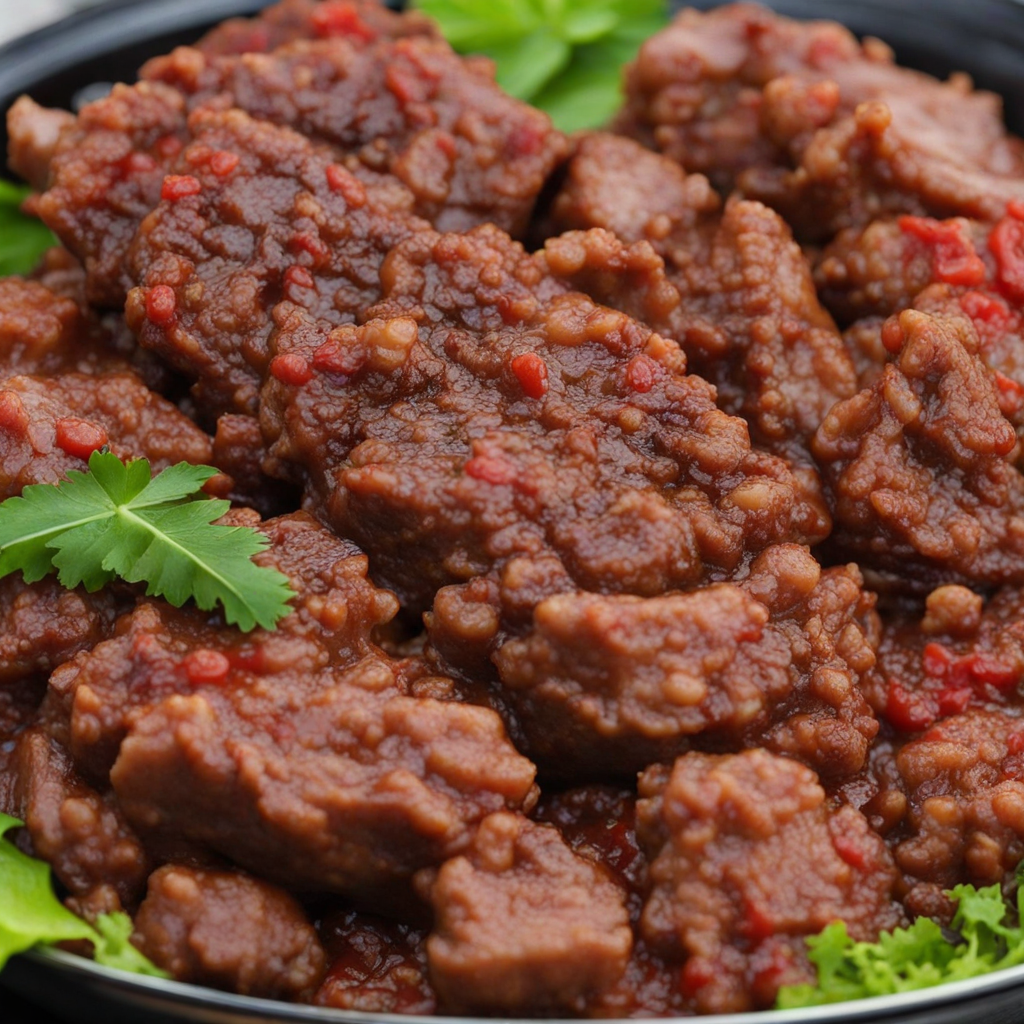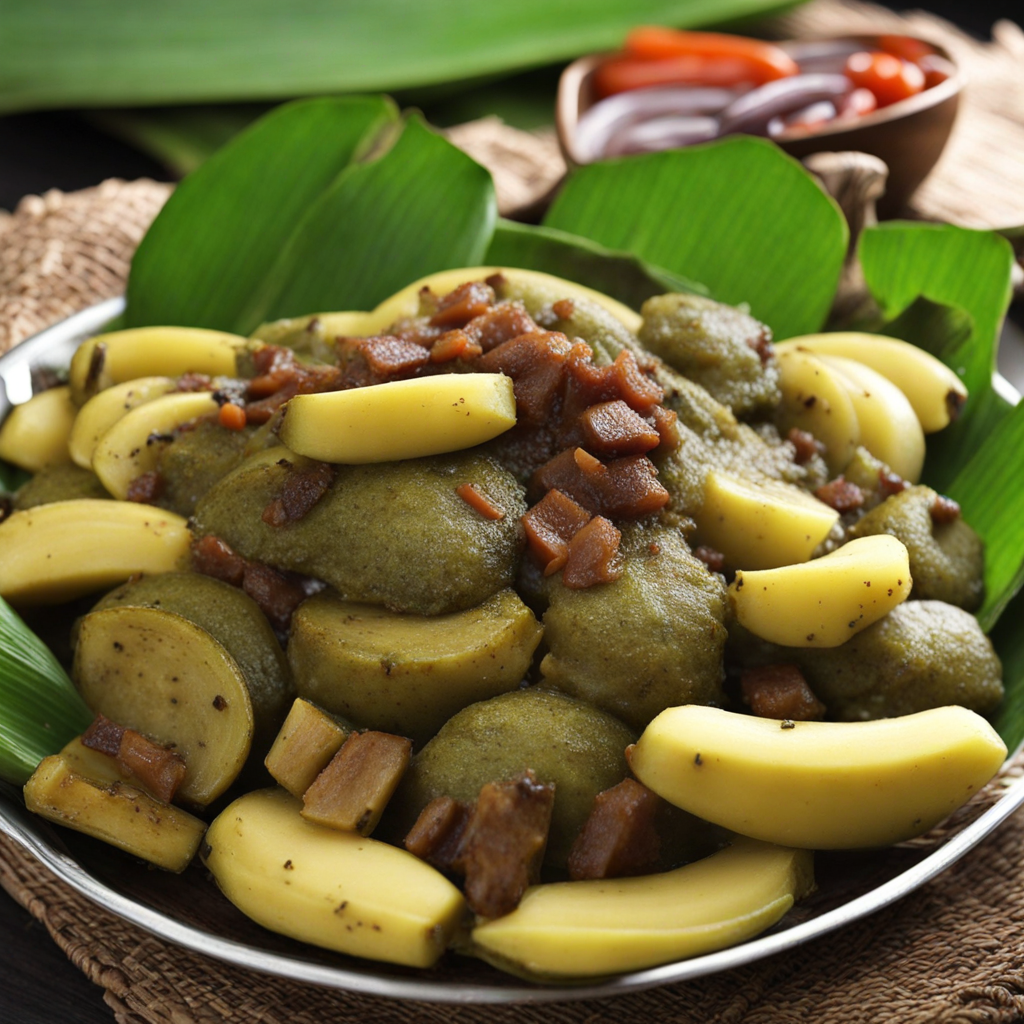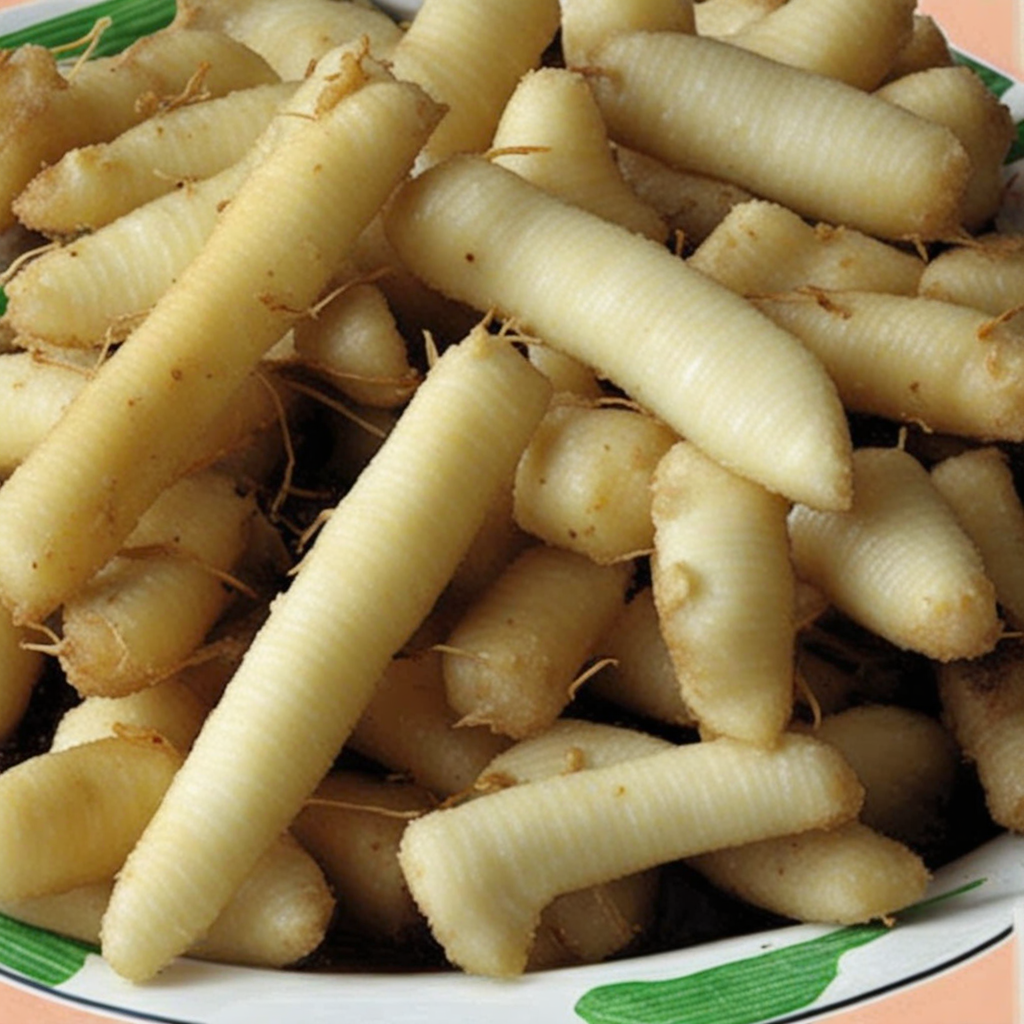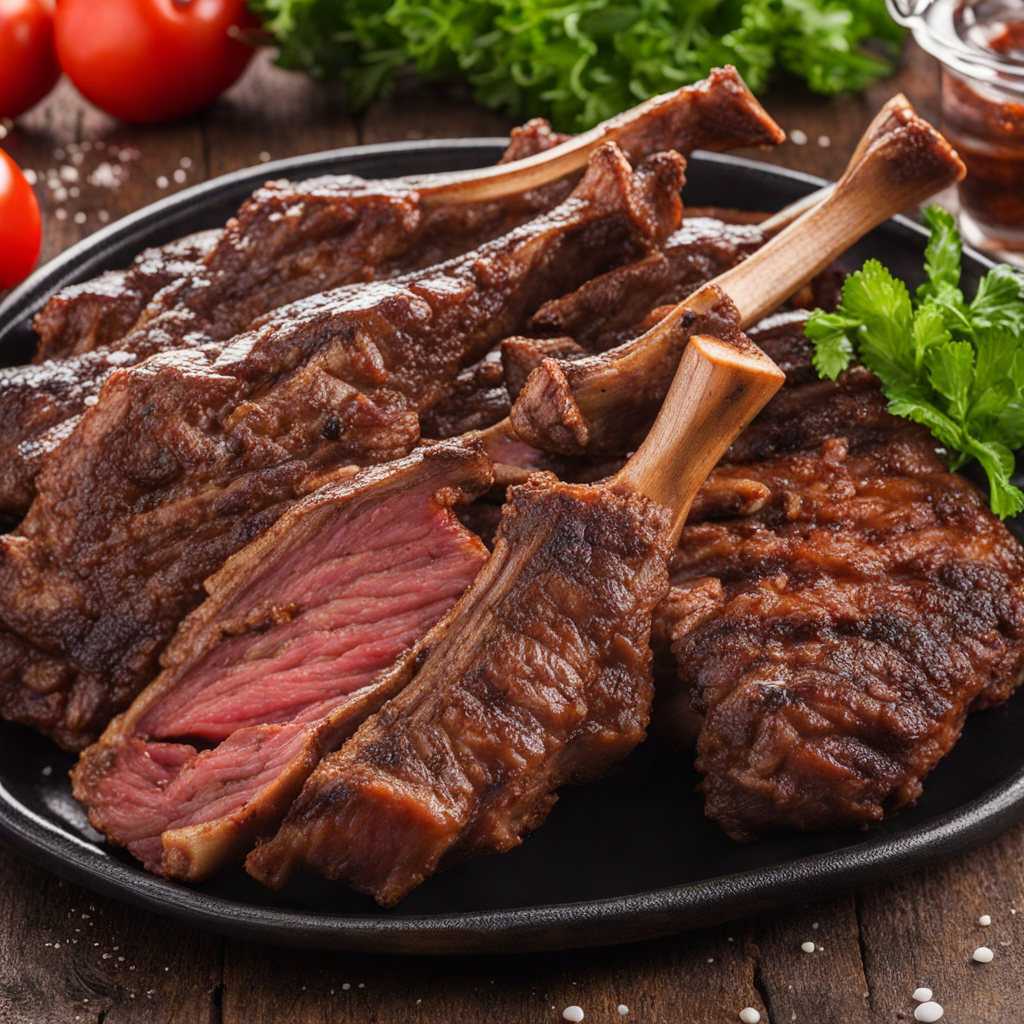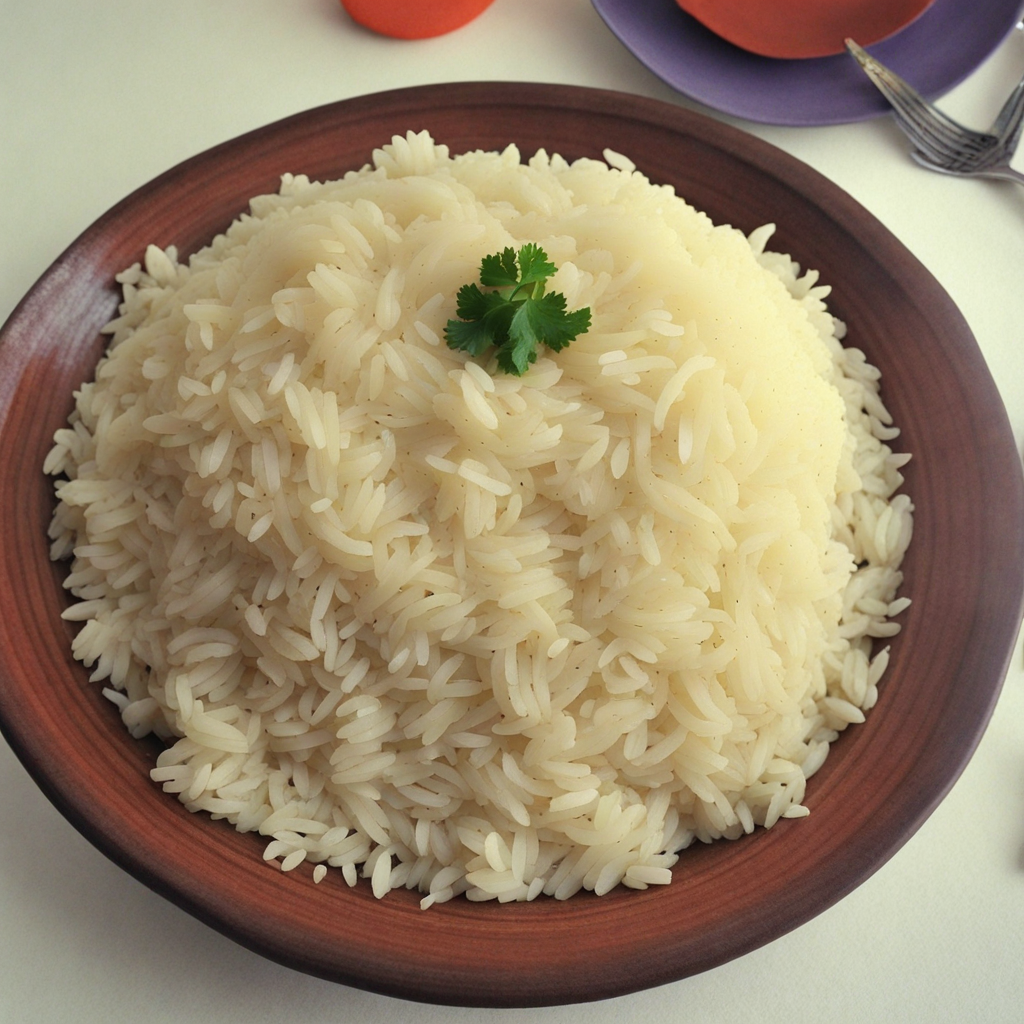Nyama ya Kusaga
Nyama ya Kusaga is a traditional Tanzanian dish that beautifully showcases the country's rich culinary heritage. This savory delight consists of finely minced or ground meat, typically beef or goat, which is spiced and cooked to perfection. The name 'Kusaga' translates to 'to grind' in Kiswahili, reflecting the preparation method that gives the dish its distinctive texture. The meat is often mixed with a medley of local spices, including garlic, ginger, and sometimes a hint of chili, which infuse the dish with deep, aromatic flavors that are both comforting and exhilarating to the palate. The dish is usually served with a side of ugali, a staple Tanzanian food made from maize flour, which complements the rich and hearty nature of Nyama ya Kusaga. The combination creates a fulfilling meal, as the blandness of ugali balances out the spiced meat, allowing the flavors to shine through without overwhelming the diner. Additionally, Nyama ya Kusaga may be accompanied by a fresh vegetable salad or sautéed greens, providing a refreshing contrast and a burst of color on the plate. Eating Nyama ya Kusaga is more than just a culinary experience; it is a celebration of Tanzanian culture and community. Often enjoyed during gatherings and special occasions, the dish brings people together around the table, fostering connections and shared memories. The communal aspect of dining in Tanzania is reflected in how this dish is served, encouraging everyone to dig in and enjoy the bold flavors and hearty texture, making it a must-try for anyone looking to explore the diverse tastes of East African cuisine.
How It Became This Dish
Nyama ya Kusaga: A Culinary Journey Through Tanzania #### Origins and Ingredients Nyama ya Kusaga, often translated as "meat of the pound," is a traditional Tanzanian dish that embodies the rich culinary heritage of East Africa. The dish is primarily made from beef, goat, or chicken, which is pounded with a mortar and pestle, alongside a medley of spices and vegetables. The name itself hints at the method of preparation—“kusaga” refers to the act of pounding, a technique that has historical roots in many African cultures. The origins of Nyama ya Kusaga can be traced back to the pastoralist communities of Tanzania, particularly the Maasai and Datoga tribes, who have long relied on livestock for sustenance. These communities developed unique ways to prepare meat, emphasizing not just flavor but also methods that aligned with their nomadic lifestyles. The pounding process was practical, allowing for quick cooking and easier digestion, which was essential for people who often moved with their herds. #### Cultural Significance Nyama ya Kusaga is more than just a meal; it is a cultural symbol that represents the communal spirit of Tanzanian society. Traditionally, the preparation and consumption of the dish involve gathering friends and family, fostering a sense of togetherness. In many Tanzanian households, this dish is often reserved for special occasions—weddings, festivals, or communal feasts—highlighting its role in social bonding. The dish also reflects the diverse culinary influences that have shaped Tanzanian cuisine over centuries, including Arab, Indian, and European elements. Spices like garlic, ginger, and chili are commonly used in Nyama ya Kusaga, showcasing the incorporation of flavors that were introduced through trade and migration. This blend of ingredients is a testament to Tanzania's rich history as a crossroads of cultures, with various influences melding into what we now recognize as Tanzanian cuisine. #### Preparation Techniques The preparation of Nyama ya Kusaga involves several steps that are steeped in tradition. The meat is first boiled until tender, often seasoned with a mix of local spices. Once cooked, it is removed from the pot and placed in a mortar, where it is pounded with a pestle. This process not only breaks down the fibers of the meat, making it easier to chew, but it also infuses the flavors of the spices deeply into the meat. Vegetables, such as onions, tomatoes, and peppers, may be added to the mixture, enhancing both the nutritional value and the flavor profile of the dish. The pounding process can vary in duration; some prefer a coarse texture, while others prefer a smoother consistency. The dish is typically served with ugali, a staple made from maize flour, which provides a perfect complement to the robust flavors of the meat. #### Development Over Time As Tanzania underwent significant social and economic changes throughout the 20th century, so too did the evolution of Nyama ya Kusaga. During the colonial period, the introduction of new agricultural practices and the establishment of cash crops altered the landscape of food production. As urbanization increased, many rural families migrated to cities, leading to a transformation in dietary habits. In urban centers like Dar es Salaam, Nyama ya Kusaga began to be featured in restaurants and food stalls, making it accessible to a broader audience beyond traditional settings. Street vendors embraced the dish as part of the growing fast-food culture, serving it alongside other local favorites. This shift not only popularized the dish but also allowed for variations, with some vendors experimenting with different types of meat or cooking methods to cater to diverse palates. The advent of globalization has also played a role in the transformation of Nyama ya Kusaga. With the rise of social media and food blogs, traditional recipes have gained newfound visibility. Chefs and home cooks alike are now sharing their interpretations of the dish, incorporating contemporary culinary techniques and fusion flavors. This has led to a renaissance of traditional Tanzanian cuisine, with Nyama ya Kusaga at the forefront, celebrated for its cultural significance and delicious taste. #### Contemporary Relevance In recent years, there has been a resurgence of interest in traditional foods across Africa, driven by a growing appreciation for local ingredients and sustainable cooking practices. Nyama ya Kusaga has become emblematic of this movement, symbolizing the importance of preserving culinary heritage while embracing innovation. Today, the dish is not only a staple in Tanzanian households but also a source of national pride. Food festivals and cultural events often feature Nyama ya Kusaga as a highlight, celebrating its role in Tanzanian identity. Furthermore, the globalization of cuisine has allowed international audiences to discover and appreciate Nyama ya Kusaga, showcasing it as a dish that represents the heart and soul of Tanzanian cooking. #### Conclusion Nyama ya Kusaga is a dish that carries with it a rich tapestry of history, culture, and community bonding. Its origins among pastoralist tribes, cultural significance in social gatherings, and ongoing evolution in urban settings highlight the dynamic nature of food as a reflection of society. As Tanzanian cuisine continues to gain recognition on the global stage, Nyama ya Kusaga stands out not just as a delicious meal but as a symbol of resilience and cultural pride. In this age of culinary exploration, Nyama ya Kusaga invites food lovers to partake in a journey that transcends borders, offering a taste of Tanzania's vibrant history and the communal spirit that food can foster. Whether enjoyed in a bustling city restaurant or a cozy family home, Nyama ya Kusaga remains a cherished dish, resonating with the flavors of tradition and the promise of future culinary adventures.
You may like
Discover local flavors from Tanzania



